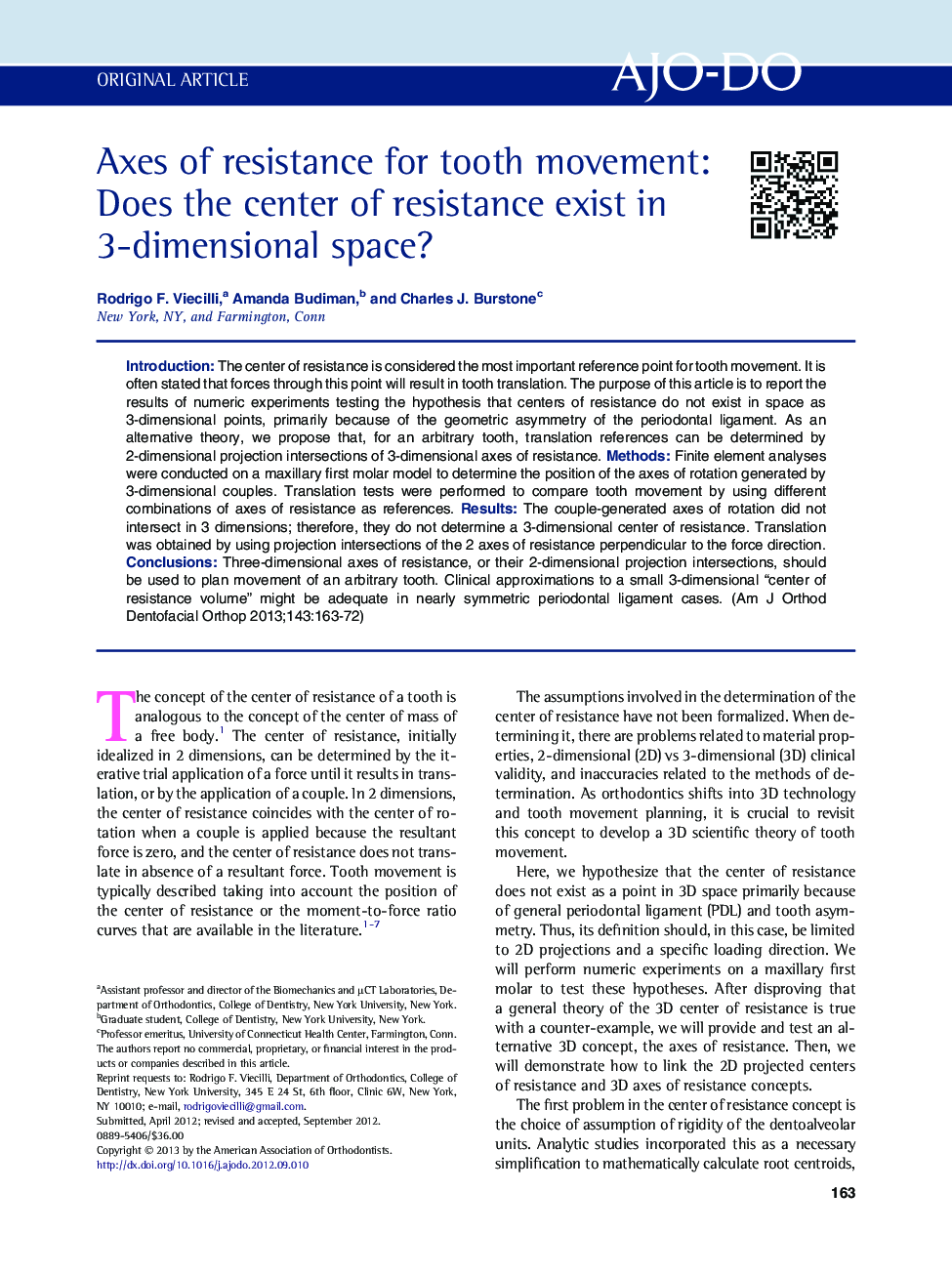| Article ID | Journal | Published Year | Pages | File Type |
|---|---|---|---|---|
| 3116938 | American Journal of Orthodontics and Dentofacial Orthopedics | 2013 | 10 Pages |
IntroductionThe center of resistance is considered the most important reference point for tooth movement. It is often stated that forces through this point will result in tooth translation. The purpose of this article is to report the results of numeric experiments testing the hypothesis that centers of resistance do not exist in space as 3-dimensional points, primarily because of the geometric asymmetry of the periodontal ligament. As an alternative theory, we propose that, for an arbitrary tooth, translation references can be determined by 2-dimensional projection intersections of 3-dimensional axes of resistance.MethodsFinite element analyses were conducted on a maxillary first molar model to determine the position of the axes of rotation generated by 3-dimensional couples. Translation tests were performed to compare tooth movement by using different combinations of axes of resistance as references.ResultsThe couple-generated axes of rotation did not intersect in 3 dimensions; therefore, they do not determine a 3-dimensional center of resistance. Translation was obtained by using projection intersections of the 2 axes of resistance perpendicular to the force direction.ConclusionsThree-dimensional axes of resistance, or their 2-dimensional projection intersections, should be used to plan movement of an arbitrary tooth. Clinical approximations to a small 3-dimensional “center of resistance volume” might be adequate in nearly symmetric periodontal ligament cases.
